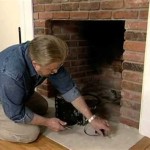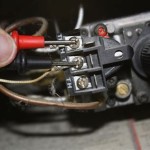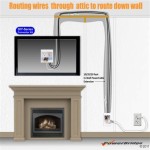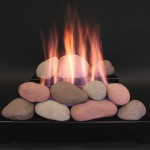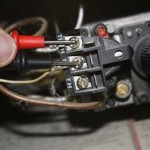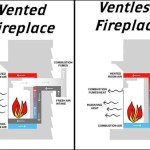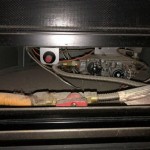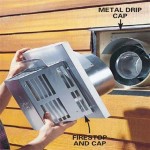Freestanding Fireplace Ideas: Enhancing Your Home with Warmth and Style
Freestanding fireplaces offer a compelling alternative to traditional built-in fireplaces, providing warmth, aesthetic appeal, and installation flexibility. Unlike their built-in counterparts, freestanding fireplaces can be positioned in various locations within a room, allowing homeowners to customize their living spaces and create a unique focal point. This article explores diverse freestanding fireplace ideas, encompassing different fuel types, styles, and design considerations to guide you in selecting the perfect option for your home.
Fuel Type Considerations: Choosing the Right Heat Source
One of the primary decisions in selecting a freestanding fireplace involves determining the fuel type. The choice impacts not only the heat output and operational costs but also the environmental footprint and maintenance requirements. The most common fuel types for freestanding fireplaces are wood, gas, and electricity, each presenting distinct advantages and disadvantages.
Wood-Burning Fireplaces: Wood-burning freestanding fireplaces offer a traditional, rustic ambiance with the crackling sound and authentic aroma of burning wood. They provide significant heat output, making them suitable for heating larger spaces. However, wood-burning fireplaces require a chimney or flue for proper ventilation, and they produce ash and require regular cleaning. Wood storage is also a consideration, as a readily available supply of seasoned wood is necessary for efficient and safe operation. Furthermore, environmental concerns related to wood smoke emissions should be addressed, and local regulations may impose restrictions on wood burning during certain periods.
Gas Fireplaces: Gas freestanding fireplaces offer convenience and ease of use. They can be fueled by natural gas or propane, providing a consistent and controllable heat source. Gas fireplaces ignite quickly and require minimal maintenance compared to wood-burning models. They also offer a cleaner burning process, producing fewer emissions. Installation requires a gas line connection, and depending on the model, a vent to the outdoors may be necessary. Gas fireplaces are available in various styles, mimicking the appearance of traditional wood-burning fireplaces or offering more contemporary designs.
Electric Fireplaces: Electric freestanding fireplaces provide a convenient and versatile heating solution. They require no venting, making them easy to install in virtually any room with an electrical outlet. Electric fireplaces use heating elements to generate warmth and often feature realistic flame effects to simulate the appearance of a real fire. They offer adjustable heat settings and can be operated with or without heat, allowing you to enjoy the ambiance of the flames year-round. Electric fireplaces are energy-efficient and produce no emissions, making them an environmentally friendly option. However, their heat output is generally lower compared to wood-burning or gas models, making them more suitable for supplemental heating.
Style and Design: Integrating the Fireplace into Your Home Decor
Beyond the fuel type, the style and design of the freestanding fireplace play a crucial role in enhancing the overall aesthetic of your living space. Freestanding fireplaces are available in a wide range of styles, from traditional and rustic to modern and contemporary, allowing you to choose an option that complements your existing decor. The material, shape, and finish of the fireplace contribute to its overall visual impact.
Traditional Styles: Traditional freestanding fireplaces often feature ornate details, such as decorative moldings, carved mantels, and intricate fire screens. They are typically constructed from cast iron, brick, or stone, evoking a sense of timeless elegance and warmth. These fireplaces are well-suited for traditional or Victorian-style homes, adding a touch of classic charm to the room. Consider models with brass or antique finishes to further enhance the traditional aesthetic.
Rustic Styles: Rustic freestanding fireplaces embrace natural materials and textures, creating a cozy and inviting atmosphere. They often feature rough-hewn wood, exposed stone, or reclaimed metal, reflecting the beauty of the outdoors. These fireplaces are ideal for cabins, cottages, and other rustic-themed homes. Models with a distressed finish or a weathered appearance can further accentuate the rustic style.
Modern Styles: Modern freestanding fireplaces emphasize clean lines, geometric shapes, and minimalist designs. They are often constructed from steel, glass, or concrete, creating a sleek and sophisticated look. These fireplaces are well-suited for contemporary or minimalist homes, adding a touch of understated elegance to the room. Consider models with a black or brushed nickel finish to complement the modern aesthetic.
Contemporary Styles: Contemporary freestanding fireplaces offer a blend of modern and traditional elements, creating a unique and stylish focal point. They may feature curved lines, unconventional shapes, and innovative materials. These fireplaces are versatile and can be integrated into a variety of home decor styles. Models with a combination of materials, such as steel and glass, can add visual interest and sophistication to the room.
Placement and Installation Considerations: Optimizing Functionality and Safety
The placement and installation of a freestanding fireplace are crucial for ensuring both functionality and safety. Proper planning and adherence to safety guidelines are essential for a successful installation. Consider the size of the room, the proximity to combustible materials, and the availability of necessary utilities when determining the optimal location for your freestanding fireplace.
Room Size and Layout: Choose a freestanding fireplace that is appropriately sized for the room. A fireplace that is too large can overwhelm the space, while one that is too small may not provide adequate heat. Consider the layout of the room and ensure that the fireplace is positioned in a location where it can effectively distribute heat without obstructing walkways or furniture. A central location is often ideal for maximizing heat distribution.
Clearance Requirements: Maintain adequate clearance between the freestanding fireplace and combustible materials, such as walls, furniture, and curtains. This is crucial for preventing fire hazards. Refer to the manufacturer's instructions for specific clearance requirements. Non-combustible materials, such as brick or stone, can be used to create a protective barrier around the fireplace. Professional installation is highly recommended to ensure adherence to local building codes and safety regulations.
Venting and Ventilation: Wood-burning and some gas fireplaces require proper venting to exhaust smoke and combustion byproducts safely to the outdoors. Ensure that the venting system is properly installed and maintained. Electric fireplaces do not require venting, making them a more convenient option for certain situations. However, regardless of the fuel type, it is important to ensure adequate ventilation in the room to prevent the buildup of carbon monoxide or other harmful gases. Consider installing a carbon monoxide detector near the fireplace for added safety.
Flooring Protection: Protect the flooring beneath and around the freestanding fireplace with a non-combustible material, such as tile, stone, or a fire-resistant hearth pad. This will prevent damage to the flooring from sparks or embers. The size of the protective flooring should extend beyond the fireplace to adequately protect the surrounding area.
Professional Installation: For gas and wood-burning freestanding fireplaces, professional installation is highly recommended. A qualified technician can ensure that the fireplace is properly installed, vented, and connected to the appropriate fuel source. Professional installation can also help to ensure that the fireplace meets all local building codes and safety regulations. While electric fireplaces are generally easier to install, it is still important to follow the manufacturer's instructions carefully to ensure safe and proper operation.
By carefully considering the fuel type, style, and placement of your freestanding fireplace, you can create a warm and inviting focal point that enhances the beauty and comfort of your home. The numerous options available allow for customization to suit your individual preferences and needs, ultimately transforming your living space into a cozy and stylish haven.

280 Freestanding Fireplaces Ideas In 2024 Fireplace Wood Stove Burning

Freestanding Fireplace Decoración De Unas Estufas Hogar Decoracion Casas Rurales

Hail The Queen Of Hygge Midcentury Modern Freestanding Fireplace Ashley Claire Real Estate Benchmark Realty

Just 7 Scandinavian Fireplaces That You Ll Want To Curl Up Next Hunker Wood Burning Stoves Living Room Freestanding Fireplace

10 Fireplace Designs That Will Give Your Home A Warm Inviting Glow Beautiful

280 Freestanding Fireplaces Ideas In 2024 Fireplace Wood Stove Burning

8 Fantastic Freestanding Fireplaces To Warm Any Room

How To Install A Freestanding Fireplace 5 Easy Steps L Esseiale In 2024 Wood Burning Stoves Living Room Farm House Modern Farmhouse

How To Decorate Around A Freestanding Stove 5 Ideas Fine Home Lamps

15 Hanging And Freestanding Fireplaces To Keep You Warm This Winter Decoist
Related Posts

